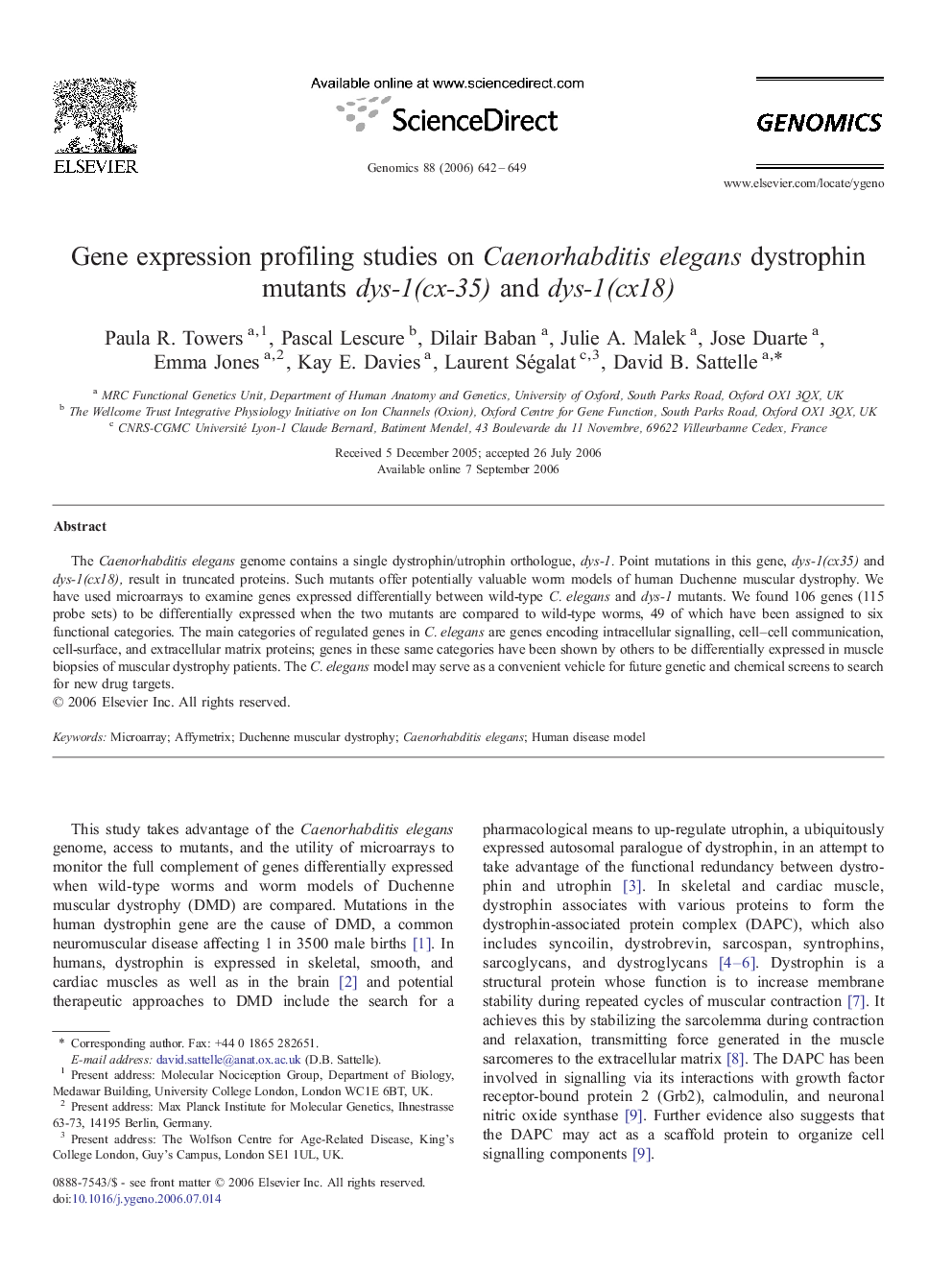| Article ID | Journal | Published Year | Pages | File Type |
|---|---|---|---|---|
| 5907995 | Genomics | 2006 | 8 Pages |
Abstract
The Caenorhabditis elegans genome contains a single dystrophin/utrophin orthologue, dys-1. Point mutations in this gene, dys-1(cx35) and dys-1(cx18), result in truncated proteins. Such mutants offer potentially valuable worm models of human Duchenne muscular dystrophy. We have used microarrays to examine genes expressed differentially between wild-type C. elegans and dys-1 mutants. We found 106 genes (115 probe sets) to be differentially expressed when the two mutants are compared to wild-type worms, 49 of which have been assigned to six functional categories. The main categories of regulated genes in C. elegans are genes encoding intracellular signalling, cell-cell communication, cell-surface, and extracellular matrix proteins; genes in these same categories have been shown by others to be differentially expressed in muscle biopsies of muscular dystrophy patients. The C. elegans model may serve as a convenient vehicle for future genetic and chemical screens to search for new drug targets.
Related Topics
Life Sciences
Biochemistry, Genetics and Molecular Biology
Genetics
Authors
Paula R. Towers, Pascal Lescure, Dilair Baban, Julie A. Malek, Jose Duarte, Emma Jones, Kay E. Davies, Laurent Ségalat, David B. Sattelle,
